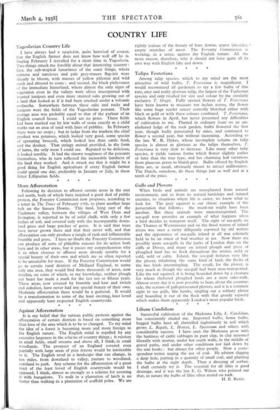Gulls and Plovers
When birds and animals are transplanted from natural environment, and so from its natural hardships and natural enemies, to situations where life is easier, we know what to look for. The grey squirrel is our classic example of the persecution that follows ; the musk-rat might have been another. But these animals were man-transported. The sea-gull now provides an example of what happens whin a bird decides to transport itself. The sight of sea-gulls on the Thames at Westminster and on the flood waters of inland rivers was once a rarity diligently reported by old writers and the appearance of sea-gulls inland at all was solemnly held to be an omen of bad weather at sea. Now there are possibly more sea-gulls in the parks of London than on the cliffs at Dover, and many on inland plough and piece of ploughed land has its flock throughout the winter, mild or cold, wild or calm. Inland, the sea-gull behaves very like the plover, inhabiting the same kind of land, the flocks of the two birds intermingling. The result, for the plover, is very much as though the sea-gull had been man-transported. Like the red squirrel, it is being hounded down by a creature for whom sheltered ploughed lands are a mere cake-walk. Almost every day it is now possible to hear, about the country- side, the scream of gull-persecuted plovers, and it is a common sight to see gulls, like hawks, singling out a solitary plover and hounding it out of the flock with that greedy rapacity which makes them apparently London's most popular birds.
* * * *






































































 Previous page
Previous page